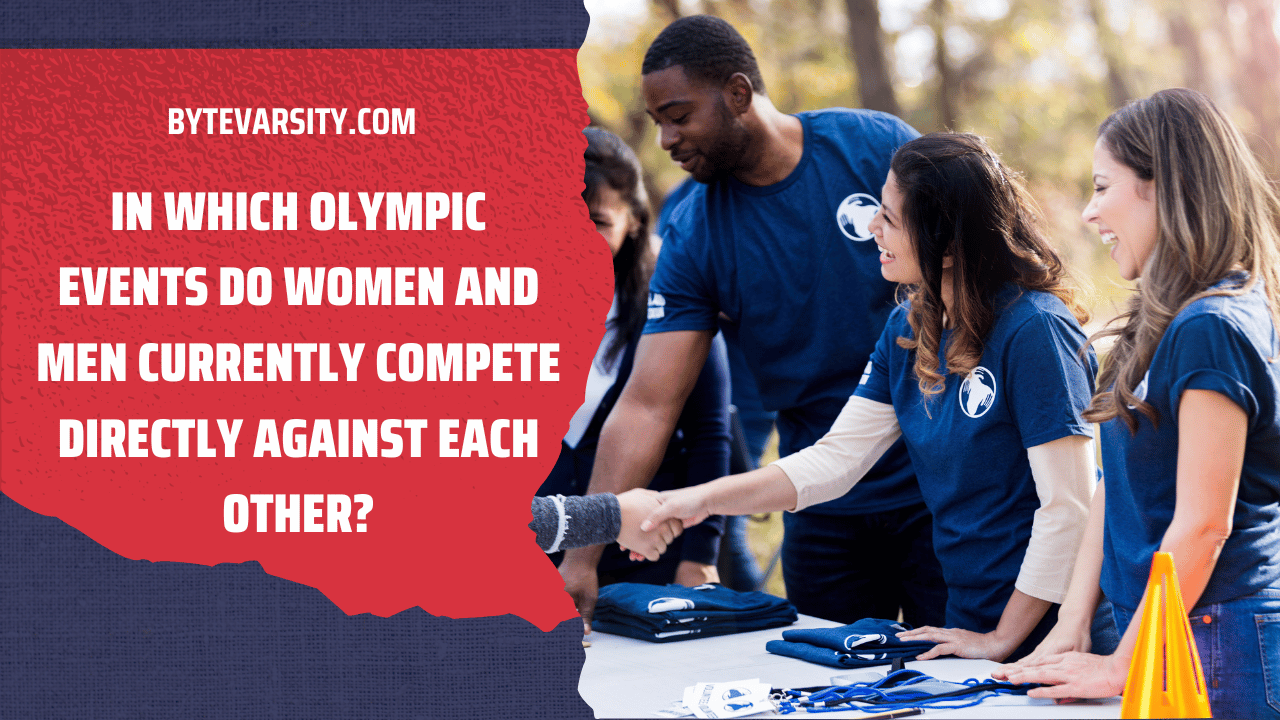In Which Olympic Events Do Women and Men Currently Compete Directly Against Each Other?

The Olympics have come a long way in terms of gender equality since the first modern Olympic Games in Athens in 1896. While women were not allowed to compete in the early Olympic Games, today they participate in almost every sport. However, despite significant progress in gender equality, there are still very few Olympic events where men and women compete directly against each other. In this article, we will explore the Olympic events in which men and women currently compete against each other.
The Olympics is one of the biggest sports events in the world, with over 200 nations participating in various sports disciplines. The International Olympic Committee (IOC) is responsible for overseeing the games, and every four years, it decides which events to include in the Olympics. The Olympics have come a long way since their inception, and one of the most significant changes has been the inclusion of women in the games. Today, women participate in almost every sport at the Olympics, and in some events, they compete directly against men.
Contents
History of Gender Equality in the Olympics
The Olympics have not always been a place for gender equality. In the early years of the modern Olympics, women were not allowed to compete. It was not until the 1900 Paris Olympics that women were allowed to participate, and even then, they were limited to a few events such as tennis, croquet, and golf. It wasn’t until the 2012 London Olympics that every country participating had female athletes in their delegation.
Mixed Gender Events at the Olympics
In recent years, the IOC has made a conscious effort to promote gender equality by introducing mixed-gender events in various sports. These events allow both men and women to compete together, often as a team, in the same event. This promotes the idea of gender equality and challenges gender norms in sports.
Athletics
Athletics, also known as track and field, is one of the oldest Olympic sports. It includes a range of events such as sprints, hurdles, long jumps, and throwing events. In some of these events, such as the 4x400m relay, men and women compete together as part of the same team. The mixed relay event was introduced at the Tokyo 2020 Olympic games and featured teams of two men and two women competing together.
Equestrian
Equestrian sports include events such as dressage, jumping, and eventing. In these events, both men and women compete together in the same event. The horses do not know the difference between genders, and it is the rider’s skill that matters in these events.
Sailing
Sailing is another sport in which men and women compete together in the same event. It involves various sailing classes such as dinghies, keelboats, and windsurfing. The races are typically held in the same waters and under the same conditions, making it a fair and equal competition.
Shooting
Shooting events include various disciplines such as rifle, pistol, and shotgun. In these events, men and women compete together, and there is no difference in the rules or equipment used. Shooting is one of the few sports in which there is no gender segregation at the Olympics.
Canoeing
Canoeing is another sport in which men and women compete together in the same event. The canoe sprint events include various distances, from 200m to 1000m, and both genders compete together in the same race. The canoeing competition at the Olympics is one of the most gender-equal events.
Conclusion
The Olympics have come a long way in promoting gender equality in sports. Today, women are competing in almost every sport at the Olympics, and in some events, they are competing directly against men. The introduction of mixed-gender events has further challenged gender norms and promoted the idea of gender equality in sports.
In conclusion, men and women currently compete directly against each other in various Olympic events such as athletics, equestrian, sailing, shooting, and canoeing. The inclusion of mixed-gender events has further promoted the idea of gender equality and challenged gender norms in sports. The Olympics is a platform for showcasing athletic excellence and promoting the values of equality, friendship, and respect.
FAQs
Why do some Olympic events include both men and women competing together?
The International Olympic Committee (IOC) has made a conscious effort to promote gender equality in sports and challenge gender norms by introducing mixed-gender events.
Are there any other sports in which men and women compete together outside of the Olympics?
Yes, there are various other sports in which men and women compete together, such as mixed doubles in tennis and mixed-gender relays in athletics.
Are there any sports in which men and women do not compete together at the Olympics?
Yes, there are several sports in which men and women compete in separate events, such as weightlifting and wrestling.
How has the inclusion of women in the Olympics evolved over time?
In the early years of the modern Olympics, women were not allowed to participate. It wasn’t until the 1900 Paris Olympics that women were allowed to compete, and even then, they were limited to a few events. Today, women participate in almost every sport at the Olympics.
How have mixed-gender events challenged gender norms in sports?
Mixed-gender events challenge the traditional notion of gender segregation in sports and promote the idea of gender equality. It shows that men and women can compete together on an equal footing, and skill and ability should be the only factors determining success in sports.






